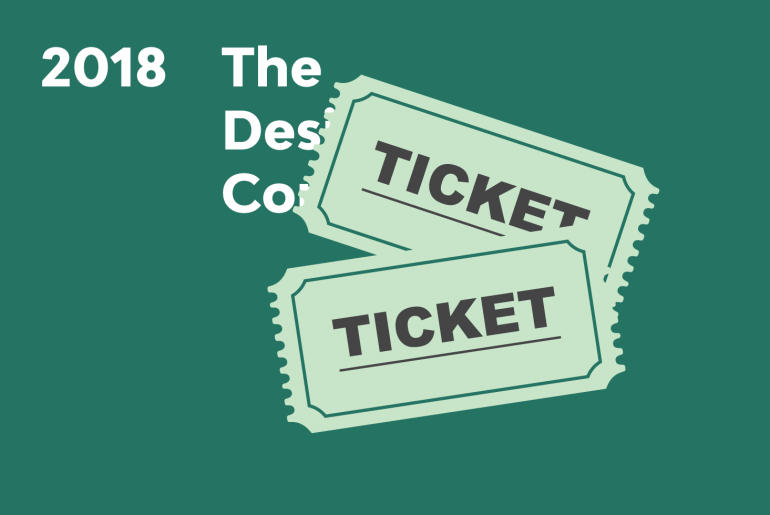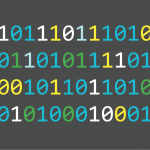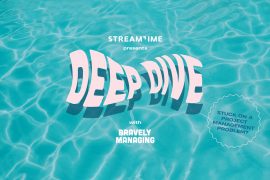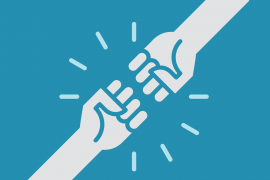The Design Conference 2018
This is the fourth time this week I have sat down to write a piece about The Design Conference 2018. So far, my success in completing what should be a relatively straightforward task – for someone who enjoys writing (particularly about things that are generally great and interesting) – has been challenged.
Here’s why.
I, as someone from Streamtime who was heavily involved with our partnership with The Design Conference this year, was asked to put some words together about the two-day event in Brisbane.
A few words
What was great
What wasn’t so great
A funny anecdote
Your favourite talk
Sum it up – you know, like you did last time.
Seems pretty straightforward and easy, right? Well, guess what? It wasn’t. And I think I finally know why.

To write a piece that merely described what happened at 2018’s offering of The Design Conference seemed to be a wasted opportunity. You see, TDC is not just an event. It’s much more than just the talks that happen across two days – although these talks do tend to be directive and prescriptive of TDC’s general aura.
The Design Conference is its constitutive elements in combination:
- The Speakers
- The Crowd
- The Venue
- The Evening Events
- The Haynes
The Speakers
When organising a conference, curating a lineup of speakers is arguably the most important task. I personally have never organised a conference, however, I imagine that to do this successfully in order to sell tickets and deliver a coherent event with respect to its mission would be a rather challenging thing.
The Design Conference does well to bring together a bill of speakers from varied cultures, nationalities and disciplines. It particularly does well to ensure that these speakers are great, genuine people, doing great things.

Twice now I have been to TDC and left inspired by the people who have crossed the stage. Though, this inspiration is not derived from the superficial rush of excitement you feel after being sold into an idea of what is cool by the person on stage. Rather, it’s derived from a genuine feeling of empowerment to map one’s own course and do what you love, which happens with the sharing of the speaker’s story. (Disclaimer: an aforementioned idea of what is cool tends to arise as a product of doing what you love)
I’ve wondered though, how do you curate this? How do you guarantee that people will connect with what is said onstage? How do you ensure that the speaker will talk about certain ideas, values or projects to inspire a crowd of 700 Brisbanites, rather than bang on about their agency’s multi-million-dollar, D&AD winning project that was completed four years ago?
The answer, I think, has revealed itself in a number of keynote talks I’ve witnessed at The Design Conference. In 2017, Dean Poole of Alt Group took to the stage to announce that, when he asked TDC Curator Matt Haynes what he should talk about, Haynes simply responded, “talk about anything you like.”
A similar story has characterised the introductions of a number of TDC keynote talks to which I have born witness.
This tells us one thing.
Whilst there is enormous trust placed in the speaker to deliver a talk on a subject of substantial value, any risk of this task not being achieved is negated by what seems to be essential TDC speaker criterium – that speaker’s character as a genuine, human being with stories to share, and an understanding of the value of these stories. It’s a simple, yet highly effective factor that informs the overall feeling of the conference.
As for the speakers themselves, there were a number of moments that stand out from 2018’s edition.

Maria Montes provided a light-hearted start to The Design Conference, recounting stories of her Catalan past and showcasing how this history has made its way into her illustration.
Christopher Doyle arrived with energy, honesty and a message on the power of language in design. Such power was integral to Chris’ talk and instrumental in earning him the people’s choice award for Best Speaker.
Craig Black delivered an important reminder of the susceptibility to burnout creatives face, in a heartfelt and personal keynote talk.
Meg Donohoe and Mitch Paone from DIA likened their practice to jazz, exposing their unconventionally experimental and improvisational design process.
Bráulio Amado explained his seemingly natural progression from playing punk in Lisbon to Art Director at Bloomberg Businessweek, to collaborating as a freelancer with Frank Ocean. (I’m still a bit confused by all this TBH) Such is the enigmatic Bráulio Amado.
Catriona Burgess shared insights into Frost Design’s strategic thinking, offering a fresh perspective not only on how we should perceive brands but also on what brands should (and need to) be in order to survive in 2018.
George Rose‘s uninhibited enthusiasm rendered actually just doing what you love is not only OK but probably the best thing you could possibly do. A more-than-welcome reminder for most that want to become an astronaut is a pipe-dream.
Prue Jones (back by popular demand) enticed attendees with her intriguing live survey of the crowd. Drawing us in, only to unleash the frightening truth of the future towards which we are so rapidly hurtling. Thanks, Prue.
Kris Sowersby of Klim Type Foundry proved an apt choice to close 2018’s chapter of The Design Conference, reminding us of the importance of function with an in-depth lecture on the process and philosophy behind the very uninteresting, unrecognisable, yet beautiful Untitled Sans and Serif.
The Crowd
Due to geography and the way that it works, most people that tend to attend The Design Conference hail from Brisbane, or other nearby rural or metropolitan areas. The Sunshine Coast or the Gold Coast were amongst the most common.
Perhaps I make the following judgement with bias, as I am from Sydney where things generally tend to happen very quickly (and people tend to get very angry when they don’t), but people from Queensland seem relatively relaxed and easygoing. The warm weather and temperate conditions render the state a nice place for a holiday, so a stereotype of the Queenslander as a relaxed and easygoing person has developed in Australian culture.
Of course, this is not to say that all Queenslanders are the same. Simply, they approach things in a similar manner, a manner that is different from what I experience en masse in Sydney.
A laissez-faire attitude met with a degree of unrestrained energy. A willingness to engage and learn. To enjoy themselves, unhindered by any stress or complexities – any problems will just work themselves out.

The resulting atmosphere created by such attitudes and energy rendered the environment of their company very inviting – apt for socialisation. And this impact is felt – The Design Conference is a social conference. You may go with a group of friends, but you will inevitably meet new people and expand that group. It just happens. There are no cliques. There is no one too cool. There is just everyone. And everyone is there for the same reason. It’s a wonderful thing.
The Venue
Social people flourish in social spaces.
The Brisbane Powerhouse is a heritage-listed, 20th-century red-brick industrial structure, re-appropriated from its original purpose of supplying electricity to Brisbane’s tram network. Opened in 2000 following a redevelopment to cater for events in contemporary culture, the building directs those who occupy it to its centre. The main hall of the Powerhouse is a place to run into people.
So, it functions with great success when occupied by a crowd of TDC attendees.

But the Powerhouse is not too grand; intimacy is retained. This sense of intimacy rises when you find yourself hanging out next to a speaker during the lunch break and are able to casually exchange words. Special moments like these happen frequently at The Design Conference.
The same can be said for the main auditorium. The space seats 700, but the room does not feel so large. Especially, when the speaker you chatted with at lunch is now on stage sharing stories with the entire conference.
The Evening Events
In addition to the two days of pure conference at the Powerhouse, The Design Conference 2018 also comprised of a series of evening events – a Launch Party on Wednesday, a VIP Dinner Discussion on Thursday, and an After Party on Friday.
So, for a few days, The Design Conference is everything. It’s all you know, and everyone is in the same boat. You pack your bags, you depart, you hang out with and share new experiences with the same group of people for a few days, you come home feeling high on life and absolutely buggered.
The evening events turn the conference into an all-encompassing three-day experience. There’s never a moment that isn’t related to The Design Conference, and participation requires your full commitment.
It’s a lot. But it is so rewarding.

Importantly, each evening event is unique.
The Launch Party this year doubled as a Bráulio Amado exhibition at Fortitude Valley underground institution, Greaser Bar. It was a chance to say hi to old friends, and first meet some of the people with whom you would be sharing the experiences of the next few days. There was a good chance that by Friday, these people would be your new best friends.
The Thursday night VIP Dinner Discussion became a place for some much-needed discussion about the state of the industry and some of the issues it faces. As a collaborative effort by TDC and the Never Not Creative community, it was an opportunity to be honest about the challenges creatives face and think deeper about how they might be dealt with.
The After Party. A celebration after an exhausting and inspiring couple of days. Of friends new and old, of exciting prospects and opportunities. Again — everyone in the same room. No barriers. No VIP section. This is the TDC way.
The Haynes
If you’ve ever had the pleasure of meeting (or being in the same room as) Matthew Haynes – LMOX to his email recipients – you will be no stranger to his infectious energy, charisma and irrepressible drive to get sh*t done.
He is a force and the lifeblood of The Design Conference – the conference might be seen as a physical extension of himself.
Haynes is inspired and excitable. He cares. He fills his plate. He wants to do great things for other people. As he made clear on Day 1, he wants The Design Conference to create life-changing moments for people.

This mission is genuine, and I have no doubt that many life-changing moments were had at this year’s event.
Without Haynes, The Design Conference would not, and could not, exist. As an event, it might, but without his contribution, it would risk being uncharacteristically TDC. It would risk sterility and the loss of its essence – the very element that sets the event apart on the Australian design calendar. As Haynes learns and grows as a person, so does The Design Conference.
Of course, Haynes has been the driving force breathing life into TDC, but the event could not have run so smoothly without the assistance of such an organised and hard-working team. A special mention goes to Jenny Fox for making things happen.
The Parts, Together
It is the summation of these parts which make The Design Conference what it is – something that I have found can be difficult to communicate, particularly to someone who has not experienced it. These parts are not mutually exclusive; they influence one another, and each part should be considered in the context of the others.
A story, funny anecdote, or recount of my favourite talk might have made for a more interesting read, although I consider the ideas above to be more important to develop an understanding as to why The Design Conference – being such a unique event – is the way it is. To dissect its parts and understand what each of these brings to the table, and to reflect on how this impacts The Design Conference allows us to better comprehend the event.
With each year, The Design Conference and its organising team will continue to be faced with ongoing challenges such as those of sustainable growth and development, speaker lineup curation and programming, and presenting an event that offers life-changing moments to its attendees. It seems that with its current formula, The Design Conference stands a good chance of meeting these challenges.
A huge thank you to Matt Haynes and the team at The Design Conference for creating a truly amazing experience. We cannot wait until next year.








1 Comment
Patty! — You think you’re out of words! This is the most beautiful thing anyone has ever written about our efforts, and I just want to cry! I love you, brother!